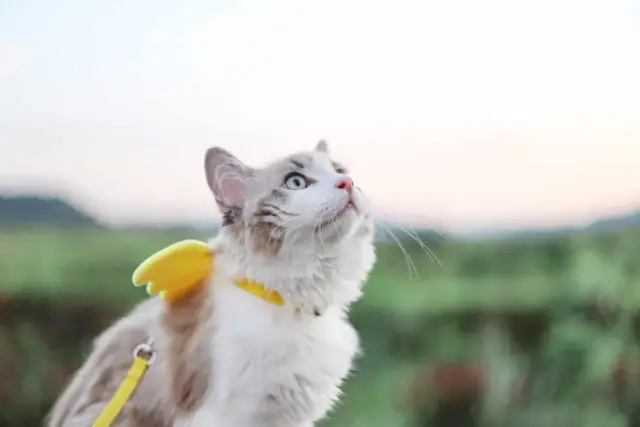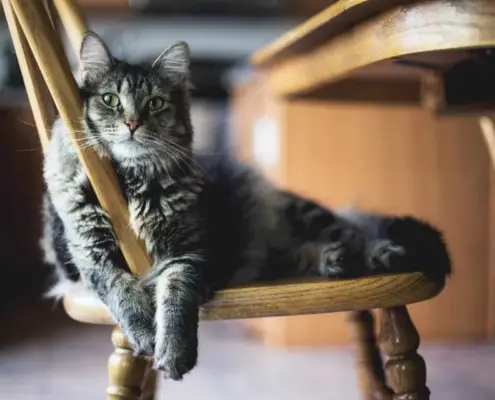
Cats have long been fascinating creatures, captivating humans with their independence and enigmatic behaviors. One aspect of feline life that remains shrouded in mystery is their reproductive process. Understanding cat sexes is not only important for breeders and veterinarians but also for cat owners who want to ensure the well-being of their furry companions. This comprehensive guide aims to shed light on the intriguing world of feline reproduction, exploring the differences between male and female cats, the reproductive cycle of females, and the behaviors associated with mating and pregnancy.
The Difference Between Male and Female Cats
While it may seem obvious, understanding the differences between male and female cats is fundamental to comprehending their reproductive roles. Male cats, also known as toms, possess distinctive physical characteristics that set them apart from their female counterparts. They typically have larger body frames, more muscular builds, and broader heads. In contrast, female cats, or queens, tend to be smaller in size, with more slender bodies and narrower heads. These differences in physical appearance are accompanied by specific physiological variations that play a crucial role in feline reproduction.
The Reproductive Cycle of Female Cats
Female cats experience a reproductive cycle that consists of distinct phases. The cycle begins when a female cat reaches sexual maturity, usually around six months of age. This phase, known as puberty, signifies the start of her ability to conceive. Once in heat, or estrus, a female cat becomes receptive to mating. The estrus cycle typically occurs every two to three weeks and lasts for about a week. During this time, the female cat may display various behaviors to attract males, including increased vocalization, restlessness, and rubbing against objects.
Understanding Heat Cycles in Female Cats
Heat cycles in female cats can be perplexing for owners who are unfamiliar with the signs and behaviors associated with this stage. As mentioned earlier, a female cat in heat becomes more vocal, restless, and seeks attention from males. Additionally, she may assume a mating posture by elevating her hindquarters and treading her back legs, signaling her readiness to mate. It’s important to note that if a female cat does not mate during her heat cycle, she may experience repetitive cycles until she conceives or is spayed.
Male Cat Reproductive Behavior
Male cats play a crucial role in the feline reproductive process. When a male cat, or tom, detects a female in heat, he exhibits distinct behaviors to signal his interest and readiness to mate. These behaviors can include increased vocalization, roaming in search of a receptive female, and spraying urine to mark his territory. Male cats also engage in a behavior known as “calling,” where they emit loud, often mournful, vocalizations to attract females. Understanding these reproductive behaviors can help cat owners monitor their male cats’ activities and prevent unwanted pregnancies.
The Process of Mating in Cats
Once a male and female cat have successfully connected during the female’s heat cycle, the process of mating begins. The act of mating in cats is often quick but intense. Male cats have barbed penises that stimulate the release of eggs from the female’s ovaries. This unique anatomical feature ensures successful fertilization. After mating, the female cat may show signs of aggression towards the male, as the act can be uncomfortable or painful for her. It’s essential to provide a safe and stress-free environment for both cats during this period.
Pregnancy and Gestation in Female Cats
After successful mating, a female cat enters the stage of pregnancy and gestation. The gestation period for cats typically lasts around 63 to 65 days. During this time, the pregnant cat’s body undergoes various changes to support the growth and development of the unborn kittens. It is essential to provide proper nutrition and veterinary care during this period to ensure the health of both the mother and her offspring. Regular check-ups and monitoring are crucial, as complications can arise during pregnancy.
The Birth of Kittens and Early Development
When the gestation period nears its end, the pregnant cat prepares for the birth of her kittens. This process, known as parturition, is a natural and instinctive event. The pregnant cat may display nesting behaviors, seeking out a quiet and secluded area to give birth. Labor can last several hours, during which the cat will experience contractions and actively participate in the delivery of each kitten. Once born, the kittens rely on their mother for nourishment and warmth. It’s essential to provide a calm and supportive environment for the mother and her newborns during the early stages of development.
Spaying and Neutering Cats
To prevent unwanted pregnancies and contribute to population control, spaying and neutering cats is highly recommended. Spaying refers to the surgical removal of a female cat’s reproductive organs, while neutering involves the removal of a male cat’s testicles. These procedures not only prevent reproduction but also offer numerous health benefits for cats, such as reducing the risk of certain cancers and eliminating unwanted behaviors associated with mating. It’s important to consult with a veterinarian to determine the optimal age for spaying or neutering your cat.
The Importance of Understanding Cat Sexes
Understanding cat sexes and the intricacies of feline reproduction is vital for cat owners and enthusiasts. By gaining insight into the differences between male and female cats, their reproductive cycles, and the behaviors associated with mating and pregnancy, owners can provide the best possible care for their feline companions. Spaying and neutering cats also play a crucial role in controlling the feline population and ensuring the overall health and well-being of individual cats. By delving into the mysterious world of cat sexes, we can foster a deeper connection with our feline friends and promote their welfare.
If you have any questions or concerns about your cat’s reproductive health, consult with a veterinarian who can provide expert guidance and advice tailored to your pet’s specific needs. Remember, knowledge is power when it comes to understanding and caring for your furry companion.
If you enjoyed my article, I would appreciate you sharing it with your network.

Sima Ndlebe
Sima writes for CatBuzz. He is interested in Cats, Health and Fitness, and Entrepreneurship.
Published: 13 October 2023




